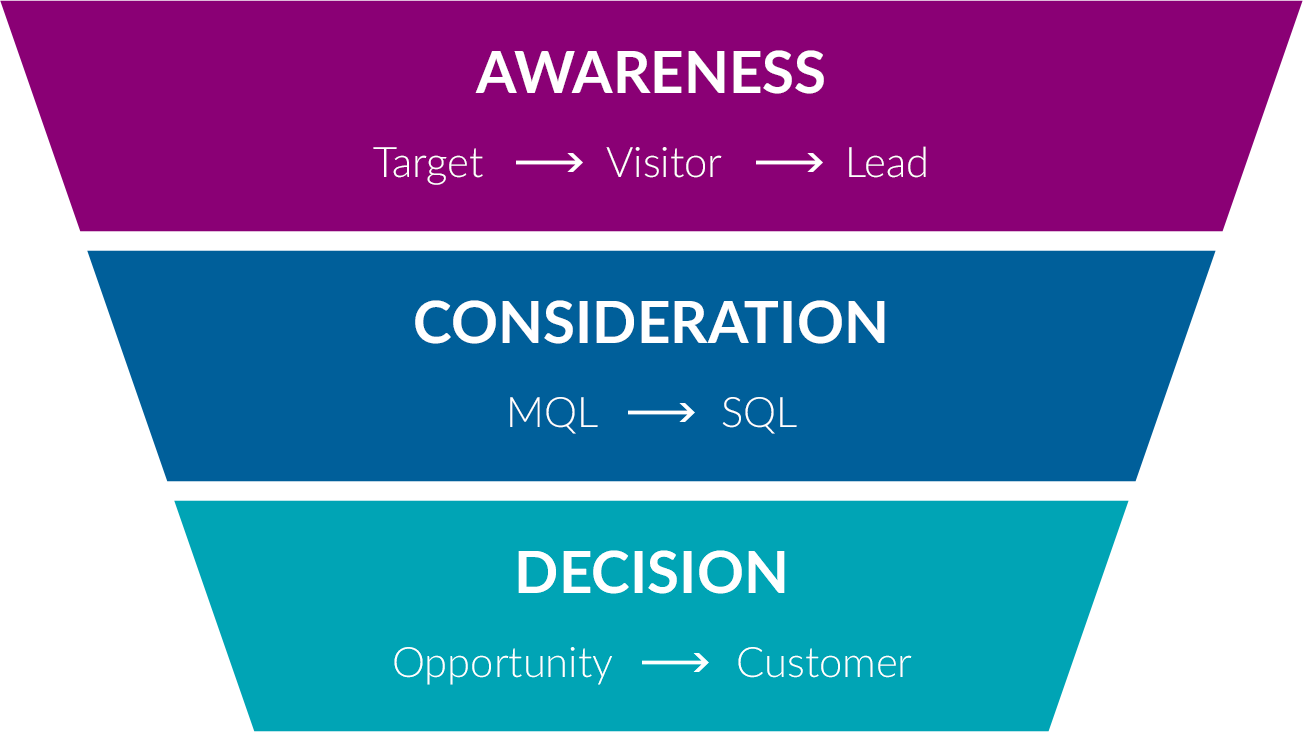The Truth About the Buyer’s Journey
Whether you choose to visualize the buyer’s journey as a funnel, a left-to-right sequence, or something else, remember that an actual journey is rarely linear. Prospects stop and restart their journey. They get sidetracked. They move backward. Your strategy must be flexible enough to maintain a connection with prospects in the real world.






